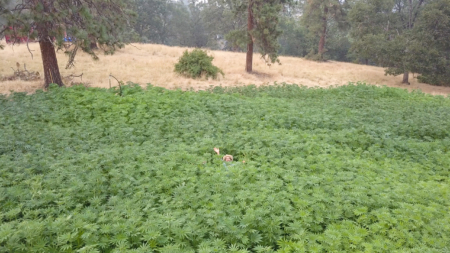So, You Want to Be a Regenerative Hemp Farmer?
This Time The Farmers Are In Charge
When you’re in a hemp field, the terpenes take over. Small bits of fragrant hydrocarbons that live on your crop’s flowers pass into your body with essences of pine or mango and tell you, “Get ready to activate the ol’ endocannabinoid system.” That’s the obvious good news—when you farm hemp, you start to get happier. The more challenging news is that you’re going to need the full energetic assistance of those terpenes. That’s partly because hemp farming, like most gigs if you’re dedicated to doing them well, is difficult.

Wake up and smell the terpenes. Aside from its many uses, hemp is a beautiful plant reaching for the sun. Funky Butte Ranch, New Mexico. Photo: Courtesy Doug Fine
What’s new to many farmers is that your hemp season isn’t over when you harvest. Whereas a greatly relieved (if often underpaid and pretty sore) farmer used to kick back and mend harness in the fall, now she’s also a processor, marketer and chief spokesperson. The farmer plays all of these roles because this farm-based renaissance is going to be run by the actual farmers. That is, if the millions of newly aboveground cannabis/hemp customers across the globe seek out regional, small batch, top-shelf offerings. This is the upside of 77 years of hemp prohibition: We can launch the industry any way we like.
To let the world know what we’re offering, we, the farmers, can even announce that saving humanity through regenerative farming practices is our brand. We’re talking here about independent, regional enterprises whose soil-building techniques not only result in bioavailable products, but also sequester carbon and thus help mitigate climate change.
So yes, you’re going to work hard if you want to leap into hemp. But between the scents, the bees (they love hemp flowers) and simply being outdoors all summer, it adds up to the most fun you can have outside the bedroom.
Rebirth Of The Regenerative Entrepreneur
How to produce top-shelf hemp? Be a regenerative farmer/entrepreneur. Regenerative is the new organic. To me, regenerative essentially means this: If what you’re doing will be good for humanity’s well-being generations down the line, it’s regenerative. My first question when embarking on any stage of the hemp process is, “What has always worked?” Another way of asking this is, “What would the shaman do?” I think this is a useful question for all entrepreneurs to ask before launch, and probably every day at breakfast.
Regenerative hemp entrepreneurs exist. They are the protagonists of my new book, American Hemp Farmer. In my own hemp enterprise, regenerative practice means trying to be aware of my impact in everything I do. From soil building to cultivation to packaging to delivery, it means rebuilding as I produce, so I can produce again. It includes practices like reduced fossil fuel farming, compostable packaging with nontoxic adhesives and respectful interaction with all humans who cross the enterprise’s path. Tip: this last one can be the hardest part. It’s kind of why I spend most of my time hanging with goats 40 miles from town.
Soil Prep
Let’s start in the ground. Prior to planting, I suggest spending three months, minimum, engaged in the conscious act of preparing your soil. In the words of my farming colleague in Hawai‘i, Vincent Mina of Kahanu ‘Aina Greens, “soil is everything.” It is our business. Most people think Vincent grows only organic microgreens. His message is: We may call ourselves asparagus, onion or hemp farmers, but in truth, we’re all soil farmers now.
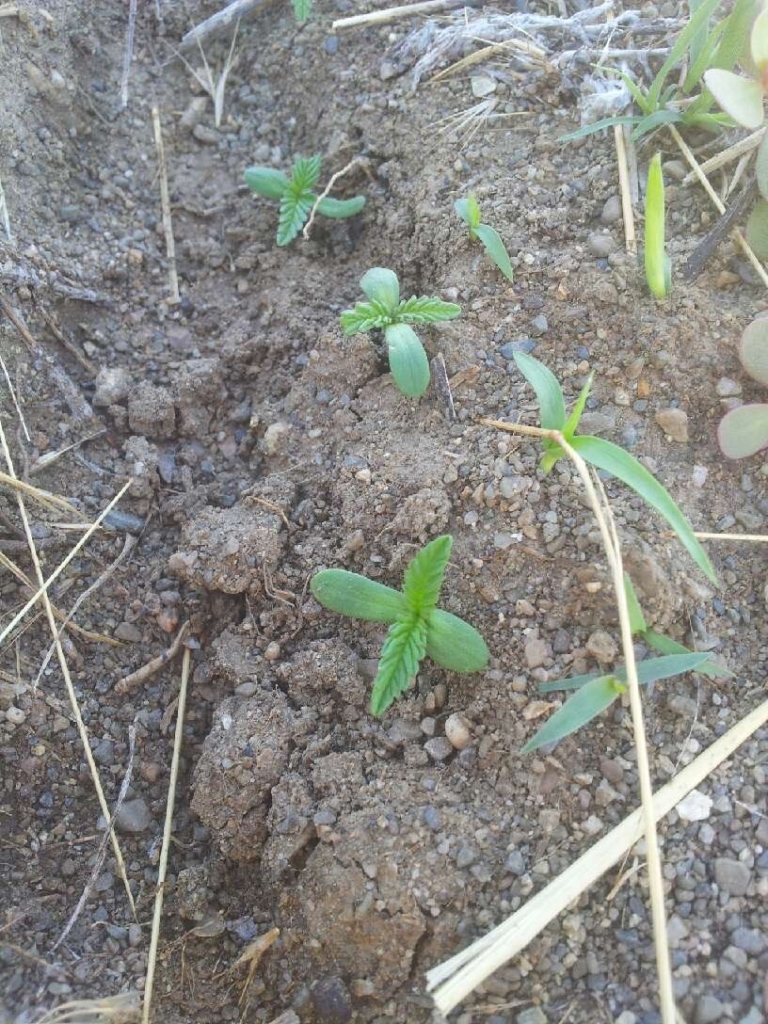
Not pictured: months of soil building that made this little firework show possible. Funky Butte Ranch, New Mexico. Photo: Courtesy Doug Fine
What goes on under the surface of your farm before you plant determines what springs forth from that ground. Simple as that. Your underground work is particularly vital if your soil, like much of the planet’s farmland, isn’t currently in tip-top shape. I’ve had the best soil results by building (as opposed to buying) the mycelial (fungal) and other microbial life that provides a friendly neighborhood for my hemp’s roots.
When it comes to applying anything to soil or plants, I suggest you cultivate your hemp in an organic fashion from your first crop, regardless of whether you go for USDA certification. Organic products are better for all critters, microscopic (in the soil) and macroscopic (your customers at the food co-op).
I began my overwinter soil preparation a couple of weeks ago by planting a nitrogen-fixing clover-vetch combination. A crop that has, on the surface, nothing to do with hemp, will play a role in the hempseed shakes I’ll enjoy with my family this fall. We also added our organic goat poop/alfalfa mix to the soil. It’s born 100 feet away in the corral. That’s our farm supply store.
Grow Under Divine Sun
I’m not the biggest fan of telling people what to do (my homeschooled sons only occasionally make use of this trait), but please grow outdoors. In real soil. We sequester carbon by cultivating superior crops in the field, not in over-sanitized “grow rooms.” Greenhouses that use real soil and real sunlight can have a role, ideally as a small part of a regenerative enterprise.
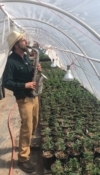
Doug channels Kenny G, surrounded by many Gs. Funky Butte Ranch, New Mexico. Photo: Courtesy Doug Fine
Planting And Sprouting
Twenty-four hours is a couple hours short for a farmer in summer, and the first moment to breathe deep and chill for a minute is when you’ve wrapped up planting. Most folks sow hemp in moist soil at a half-inch depth, working for good seed-to-soil contact at that magic moment of germination. Avoid overwatering thereafter. Planting is like spring training—you’re rusty and perhaps not yet in midseason shape. But your hemp—a strong crop with which humans have been co-evolving for 8,000 years—often sprouts before you expect. The first green hook, followed by that distinctive cannabis hand-shaped leaf, sets your family and your partners into a primeval jig. These are moments you never forget. You are a midwife attending a humanity-saving birth.
Congratulations, you’re a hemp farmer. You’re serving your family, community and species by doing something that, ten years ago, could have got you ten years to life. Now it’s extending your life, and hopefully helping the customers who wind up enjoying the harvest.
Be On The Farm
So jig away. But when you’re done, remember that success hinges on being in the field. Every day, ideally, especially if you’re one of the primary farmers. But be there at least every week. No matter your title in the enterprise, consider yourself a farmer. There is no role in the operation that should keep you off the farm for long—not logo designer, delivery driver or traveling trade show booth roadie. And certainly not president of the company. You work for a plant. Keep a close and loving eye on it.
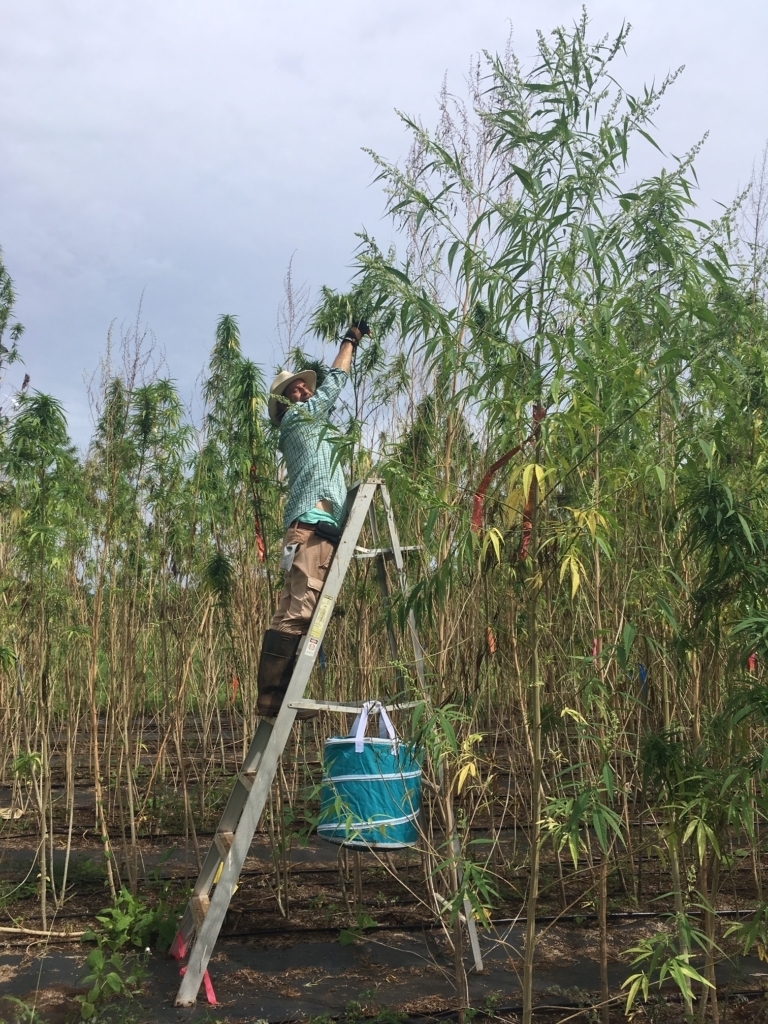
Regenerative hemp farming ladders up to the goal of saving our home planet. Doug works as an affiliated researcher on a University of Hawaii research project led by professor Qing Li and project manager Melody Heidel. Photo: Courtesy Doug Fine
You should want to do this. If lots of plant snuggling doesn’t sound like a fundamental element of a hemp business plan to you, or if a day spent getting muddy while being dive-bombed by mosquitoes isn’t your idea of a good time, then independent hemp farming might not be the profession for you. Nurture dirty fingernails.
Dry Your Hemp Harvest
When the long fall shadows have you checking your dank crop for harvest ripeness, one practical field component often comes as a surprise to first time hemp farmers (especially folks who grow dioecious—male and female—crops, as I do): the imperative of getting your crop dry. Immediately. The most time-sensitive part of harvest is not the harvest itself. It’s the two hours following harvest.
This is a must-know piece of intelligence. The moment you harvest your hempseed, the clock is running to get it down to eight percent moisture. That’s because the instant your seed leaves the field and is deposited in a bag or silo, it starts to compost. Try sticking your arm in a batch of hemp 45 minutes after harvest—it will be nearly too hot to stand. Your harvest is cooking. Now it’s a sprint. You’ve got to get it dried and cleaned or it can become moldy and ruined before the day is out. This often involves forced air drying in a silo (make sure you have a moisture tester). The takeaway here is that one of a farmer’s key midseason tasks is to dial in the whole drying and cleaning process well before harvest time.
Shamanistic Processing
Now it’s product-making time. Also a fun part of the season, but you really gotta concentrate. This might involve extracting parts of the plant for your product, though providing high-end raw flowers or whole seed superfood is fantastic, too. I grow for seed, flower, fiber and soil building.
Nothing wrong with CBD, CBG and other flower extraction applications, of course. After all, every mammal has an endocannabinoid system. But I also like to keep in mind that we have nearly eight billion folks to feed with the omega-balanced, mineral-rich feast that resides in hemp’s seed. In addition to food, farming at scale will allow the revival of hemp fiber products, from top-shelf textiles to tree-free paper to laptop and rocket components and such. Anything made from petrochemical plastic can be made from compostable biomaterials. Goodbye Great Pacific Garbage Patch.
Say you are growing for a flower application (ideally, offering a whole-plant “entourage effect,” rather than jacking up one fashionable cannabinoid). I like to extract the healthy or tasty parts using an age-old method: heat it up in a lipid. This results in a process called decarboxylation. It’s slower than the processes used in the mass-produced McHemp and CokeCBD we’ll inevitably see in chain drug stores, but, I believe, far superior; the way fresh-squeezed orange juice beats frozen concentrate. You end up with a whole plant product. There are other ways to extract, and for folks who seek larger scale product runs, I believe cold ethanol (think Uncle Jessie’s still) can probably be regenerative if your facility is solar powered.

Doug’s organic cultivation colleague Colin Nohl stirs the pot during a small-batch processing session in New Mexico. Photo: Courtesy Doug Fine
I like to process my own product in small batches alongside friends. We hole up in a commercial kitchen in the mountains after harvest and spend several terpene-laden days bottling our organic product lines in giant cauldrons (intended as pasta pots). If that sounds like a blast, it is, but also remember, you’re now a professional—you have to follow commercial product best practices, track all your batches and, no matter how many people tell you they love your product, avoid making claims.
Value-Added Craft Hemp
At the supermarket, we might want every Wheat Thin to look just like every other Wheat Thin. But in the coming craft vintage hemp market, we’ll look for varietals that will vary from year to year and from region to region. A Vermont vintage will taste different from a New Mexican or Ghanaian hemp product. This concept of terroir is essential to the top-shelf hemp craft model. These are the products to bring to a wedding dinner, or to feed your family the best of the best. This niche has a chance to help revive rural communities worldwide, because each acre is so dang valuable, especially when the farmer is benefitting from final retail prices.
This means that for many independent farmers, marketing a value-added local varietal product is a wiser long-term move than simply wholesaling your loved crop to someone else who sees it for a day but for some reason controls prices. Though an entrepreneurial strategy is riskier and means much, much more work, it’s also more lucrative and sustainable for you, your business and the soil.
Start Small
My suggestion to someone reeling from a quick read of their state’s hemp application guidelines (hemp, of course, should not require a permit to grow any more than tomatoes do): start small. If you’re trying to save your uncle’s back twenty from becoming another imported particleboard subdivision, begin with one or three acres, and (almost no one listens to this) have a five-year game plan. Even your marketing strategy and plans for paced growth as an enterprise can be regenerative. Ask yourself: How big is big enough? How far of a reach keeps you building your regional economy?
The Regenerative Brand
If humanity’s survival is the goal, a fundamental commitment to running completely regenerative operations must begin at launch. In every step of your enterprise, walk the walk. Brag about your company’s profit sharing, electric delivery vehicles or zero-petroleum harvest. That’s how the regenerative craft niche will win in the marketplace.
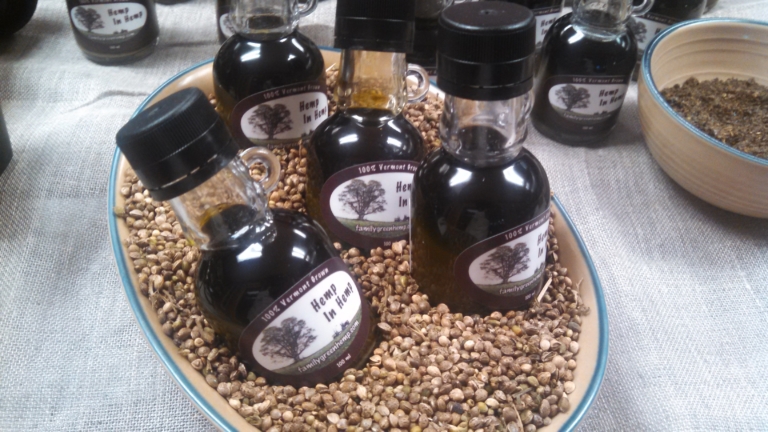
Maple syrup ain’t the only thing sticky about Vermont. Doug also offers top-shelf hemp products grown in the Green Mountain State, where he teaches a hemp course at Sterling College. Photo: Courtesy Doug Fine
Without that marketplace superiority, merely saving humanity would be a tough sell to many economically stressed family farmers. The essential point is that regenerative values can still be entrepreneurial; everyone wants to make a living. A farm-to-table hemp product that is cultivated and marketed regionally is the most lucrative hemp niche—and the industry has already crossed the billion-dollar-per-year threshold.
And that’s really the rub: a billion-dollar hemp industry only means something if we know and choose to buy from our local farmer. There are thousands of us in the soil, working for the hemp plant and the microbes that support both the plants and us. We are, in fact, hemp’s leading brand. You can find a local offering at your farmer’s market or food co-op. So please buy from a farmer-run entity, rather than a faceless one.
Collectively, we’re a plane flying a banner over a crowded beach reading, hemp/cannabis is open for business, everyone! ask around! know your farmer! Even if we grant that working to ensure a place for living products in a globalized food system is an admirable mission, will it succeed? In truth, we soil-based entrepreneurs are all too new at this to yet know if our values can map to the digital-age economy on a decentralized but cumulatively mass scale. The goal is mainstream buyers demanding our products. Just as every customer today understands that a drink might come in regular and diet, so our endgame is a shopping climate wherein every purchase decision is either “regenerative” or “other.”
The emerging biomaterials economy really does have the potential to transform the worldwide industrial pipeline into a regenerative mode. Visualize compostable cell phones with both their outer plastic casings and their interior battery components made from our favorite crop. The latest versions will be delivered in electric vehicles powered by hemp batteries that are charged by the sun.
Superfood Security
For me, it’s most of all about contentedness at home—about health maintenance for my human kids and goat kids. Every hemp enterprise is wise to broadcast its backstory as a brand. Mine might be “food security in a time of climate change.”
Blissing out in our hemp field here on the Funky Butte Ranch in a remote corner of New Mexico is one of my favorite parts of the day. The first time this happened, as we dropped the seed into the ground, my whole family was giggling and explicitly giving thanks alongside hungry rabbits and delirious bees. When we harvested together seven months later, we were a relaxed troop of apes: our superfood was dialed in, by the ton. We knew we would survive one more year.
Learn More
How does Patagonia use hemp and support American hemp farmers?
Why is Regenerative Organic superior to conventional agriculture?
